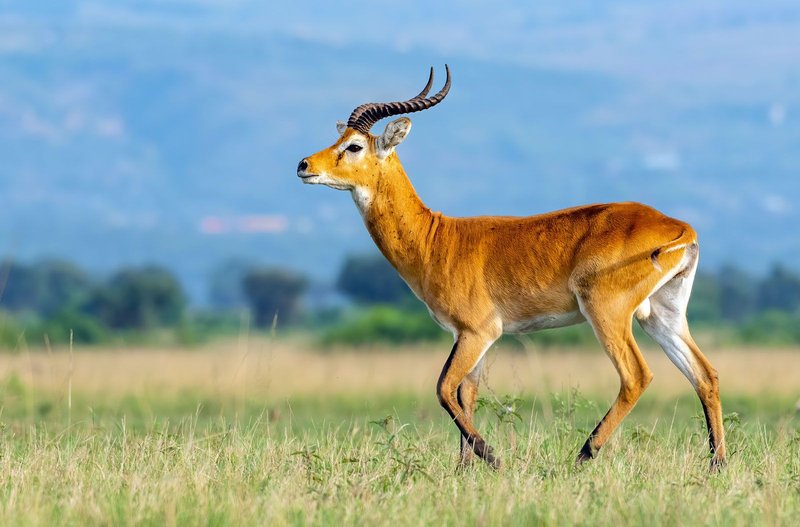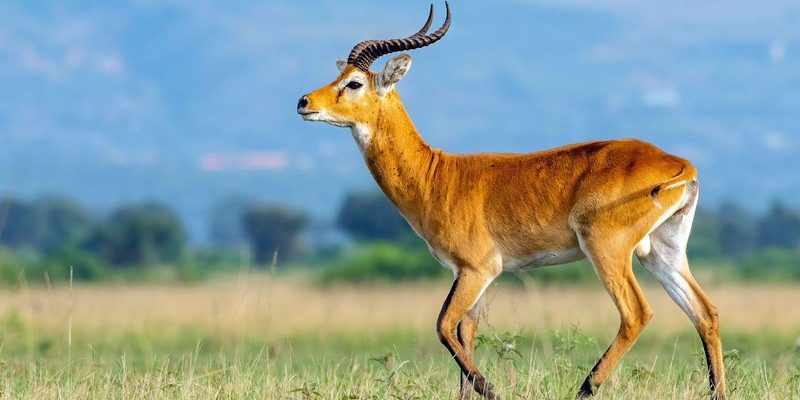
Picture this: you’re in the heart of Africa, surrounded by the vibrant landscapes of Uganda. Amidst the lush greenery and rolling savannahs, you might spot a graceful creature leaping effortlessly across the plains. That’s the Ugandan Kob—a stunning antelope that plays an essential role in its ecosystem. With their striking coats and powerful legs, these animals are not only a sight to behold but also a crucial part of the wildlife tapestry in Uganda.
The Ugandan Kob isn’t just beautiful; they are also fascinating in their behavior and social dynamics. You might be surprised to learn that they have complex social structures and impressive adaptations that help them thrive in the varied habitats of their home. So, let’s dive into the world of the Ugandan Kob and uncover what makes this antelope so special.
Physical Characteristics of the Ugandan Kob
First things first, let’s talk about what the Ugandan Kob looks like. These antelopes are known for their slender, athletic build. Adult males typically weigh between 90 to 120 pounds and stand about 3 feet tall at the shoulder. Females are smaller, usually 70 to 100 pounds, and they lack the impressive horns that males possess. Speaking of horns, those of the males curve gracefully backward and can reach lengths of around 30 inches.
Their coats are a beautiful reddish-brown, with striking white markings that include a patch on their backs and distinctive facial markings. These features not only make them visually appealing but also play an important role in camouflage. You see, in the grasslands and woodlands where they live, these markings help them blend into their surroundings, keeping them safe from predators.
Habitat and Distribution
The Ugandan Kob is primarily found in the wetlands, grasslands, and savannahs of Uganda. Habitat: They often prefer areas close to water sources, like lakes and rivers. This is because these habitats not only provide food but also offer a refuge from hot, dry conditions. Look deeper into their habitat choices, and you’ll notice that it’s all about survival—a balance between access to food, safety from predators, and staying hydrated.
In Uganda, the Queen Elizabeth National Park is a hotspot for spotting these antelopes. Here you can see them grazing in groups, known as herds. The herds can vary in size, usually made up of females and their young, while males tend to roam independently or in smaller bachelor groups. This social structure allows for effective mating and rearing of young, which is essential for the species’ survival.
Diet and Feeding Habits
When it comes to dining, the Ugandan Kob is primarily a grazer. They enjoy a diet rich in grasses, herbs, and shoots that are abundant in their savannah habitats. These antelopes are particularly fond of young, tender grass—a delicacy that provides the necessary nutrients for their active lifestyle. Interestingly, they are also selective feeders, meaning they will often seek out specific plant species that suit their taste and nutritional needs.
Their feeding habits are not just about filling their stomachs; they’re also about survival. By choosing specific plants, they reduce competition with other grazing animals. This strategy helps maintain a balanced ecosystem where various species can thrive. Watching them feed can be a serene experience, as they often graze peacefully, keeping a watchful eye for any danger lurking nearby.
Behavior and Social Structure
You might be wondering how Ugandan Kobs socialize. Well, they are quite the social butterflies—if antelopes can be called that! Herds are typically made up of females and their offspring, with males joining only during mating seasons. This social structure helps in protecting the young from predators, as the group can work together to keep watch. The females communicate using various vocalizations and body language, which helps to strengthen bonds within the herd.
During the mating season, things get a bit more competitive. Males will establish territories and compete for the attention of females. They engage in displays of strength, including bounding leaps and impressive horn displays. This is where you might see some spirited sparring as they vie for dominance. It’s a fascinating aspect of their behavior, showing how survival often involves a balance of strength and strategy.
Reproduction and Lifespan
Reproduction among Ugandan Kobs is an interesting affair. The mating season peaks during the rainy season, which aligns with the abundant food supply. After a gestation period of about 7 months, females give birth to a single calf, most often hidden away in grasslands for safety during their vulnerable early days.
Newborn calves are remarkably quick learners. Within hours, they can stand and walk, which is crucial for escaping predators. The young stay with their mothers for several months, slowly gaining strength and independence. In terms of lifespan, Ugandan Kobs can live up to 10 years in the wild, although they face many challenges, including predators and habitat loss.
Conservation Status
Unfortunately, like many animals, Ugandan Kobs face challenges that threaten their populations. Habitat loss due to agriculture, poaching, and human encroachment have put pressure on their numbers. They are currently classified as Near Threatened by the IUCN. Conservation efforts are underway to help protect their habitats and ensure their survival for future generations.
Organizations and local communities are working together to create protected areas, educate about wildlife conservation, and promote eco-tourism. These efforts not only help the Ugandan Kobs but also support the ecosystem as a whole, showcasing how interconnected we all are in this beautiful world.
Interesting Facts about Ugandan Kob
| Scientific Name: | Kobus kob thomasi |
| Size: | Up to 3 feet tall at the shoulder |
| Weight: | 90-120 pounds (males) |
| Habitat: | Wetlands, grasslands, and savannahs |
| Diet: | Grasses, herbs, and shoots |
| Predators: | Lions, leopards, and crocodiles |
| Lifespan: | Up to 10 years in the wild |
The Ugandan Kob is more than just a pretty face in the African wilderness. They embody the rich biodiversity of Uganda and play a vital role in their ecosystem. From their remarkable adaptations to their social behaviors, these antelopes remind us of the beauty and complexity of nature. By learning about and supporting conservation efforts, we can ensure that future generations enjoy the sight of these graceful creatures bounding across the plains of Uganda.
FAQ
What is the habitat of the Ugandan Kob like?
The Ugandan Kob primarily inhabits wetlands, grasslands, and savannahs. They prefer areas near water sources, as these locations provide both food and safety. Their habitats are characterized by lush grasses and shrubs, which offer shelter from predators and access to food sources.
Are Ugandan Kobs social animals?
Yes, Ugandan Kobs are highly social animals. They live in herds made up of females and their young, while males often form smaller bachelor groups or establish territories during mating season. This social structure aids in the protection of the young and enhances their chances of survival.
What do Ugandan Kobs eat?
Ugandan Kobs are grazers and primarily feed on grasses, herbs, and young shoots. They are selective feeders, often choosing specific plant species for their nutritional needs. This helps them thrive in their environments while minimizing competition with other grazing animals.
How do Ugandan Kobs protect themselves from predators?
Ugandan Kobs rely on their keen senses and social behavior for protection. They often stay in groups, allowing them to alert each other to potential dangers. Additionally, their coloration helps them blend into their surroundings, making it harder for predators to spot them.
What are the main threats to Ugandan Kobs?
Main threats to Ugandan Kobs include habitat loss due to agriculture and human encroachment, as well as poaching. These factors have contributed to their classification as Near Threatened by the IUCN, making conservation efforts essential for their survival.
How do Ugandan Kobs reproduce?
During the mating season, male Ugandan Kobs establish territories and attract females. After a gestation period of about seven months, females typically give birth to a single calf, which remains hidden in the grass for safety during its early days. The mother provides care and protection until the calf grows stronger.
Can I see Ugandan Kobs in the wild?
Yes! Uganda is home to several parks where you can see Ugandan Kobs in their natural habitat. Queen Elizabeth National Park and Murchison Falls National Park are two excellent locations for wildlife enthusiasts to witness these graceful antelopes in action.
What is the lifespan of a Ugandan Kob?
In the wild, Ugandan Kobs can live up to about ten years. However, their lifespan can be affected by various factors, including predation, disease, and habitat conditions. Conservation efforts aim to create a safer environment for these animals, potentially increasing their lifespan.
Are Ugandan Kobs endangered?
While they are not currently considered endangered, Ugandan Kobs are classified as Near Threatened. This status highlights the pressures they face from habitat loss and poaching, emphasizing the need for continued conservation efforts to protect their populations.
Do Ugandan Kobs migrate?
Ugandan Kobs do not migrate over long distances like some other species. However, they may move to different areas within their home range in search of food or water, especially during dry seasons. Their movements depend largely on the availability of resources in their habitats.
How can I help in the conservation of Ugandan Kobs?
You can contribute to the conservation of Ugandan Kobs by supporting wildlife preservation organizations, participating in eco-tourism, and spreading awareness about the importance of protecting their habitats. Every small action counts in ensuring that these beautiful animals continue to thrive in the wild.

